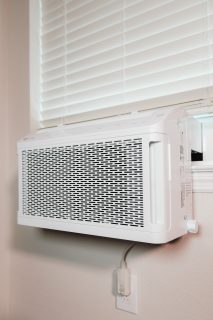The air quality inside our homes is something that we often take for granted without giving much thought to the invisible contaminants around us. In reality, the air indoors can be filled with numerous harmful pollutants that may negatively impact our physical and mental health.
This article will discuss the top indoor pollutants in most homes and provide helpful tips on reducing their prevalence to improve overall well-being. From dust mites and mold to pet dander and volatile organic compounds (VOCs), understanding the sources of these pollutants is essential to ensure healthier air quality at home. Let’s dive into what you need to know. Longevity Live Paid Content.
Identifying the Top Air Pollutants in Your Home
Indoor air pollution is a hidden danger that affects millions of households globally. Unfortunately, many people are unaware of the pollutants lurking in their homes and their potential health risks. Identifying the top air pollutants in your home is crucial in maintaining a healthy living environment.
Research has shown that common pollutants such as dust, pet dander, rodents, and household chemicals can cause respiratory problems and even contribute to chronic illnesses.
How Do Rodents Contribute to Air Pollution?
Rodents themselves do not directly contribute to air pollution in a house. However, their presence can indirectly contribute to poor indoor air quality in a few ways:
- Droppings and Urine: Rodents, such as mice and rats, produce droppings and urine that can contaminate the air if left uncleaned. These excretions can release allergens and potentially harmful bacteria into the air, leading to respiratory issues or exacerbating existing allergies or asthma.
- Nesting Materials: Rodents build nests using shredded paper, fabric, and plant matter. Over time, these nests can accumulate dust, dander, and other particles, which may become airborne and affect indoor air quality.
- Allergens: Rodents themselves, as well as their fur, dander, and saliva, can be allergenic to some individuals. People with rodent allergies may experience symptoms such as sneezing, coughing, and wheezing when exposed to their allergens.
- Damage to Infrastructure: Rodents are known to chew on electrical wiring, insulation, and other materials in a house. This can result in the release of particles into the air, such as insulation fibers or dust from damaged materials.
- Indirect Effects: Rodents can attract other pests like fleas, ticks, and mites, which can also impact indoor air quality and contribute to allergic reactions or respiratory issues.
To maintain good indoor air quality and prevent potential health issues associated with rodents, it is important to promptly address any infestation by implementing effective pest control measures and ensuring thorough cleaning and sanitization of affected areas. You can then use rodent-proofing services to prevent any new infestations.
Investing in air quality monitors and regularly checking your home’s ventilation system to prevent these pollutants from accumulating is essential. Awareness and diligence in maintaining air quality in your home can lead to a healthier and happier life for you and your loved ones.
The Effects of Air Pollution on Your Health
Air pollutants can have an array of adverse effects on our physical and mental health, ranging from itchy eyes and sneezing to headaches, dizziness, and fatigue. Air pollution can sometimes lead to more serious respiratory issues such as asthma or COPD.
The best way to protect yourself is by understanding the potential risks associated with particular pollutants in your home. For example, VOCs are chemical compounds emitted from standard household products like paints and varnishes that can cause eye irritation or skin rashes if inhaled over long periods. It’s essential to take these warnings seriously and take preventive measures before using any hazardous chemical in your home.

Photo by Airam Dato-on
Understanding Indoor Air Quality Regulations
Homes in certain states may need to adhere to air quality regulations laid out by local or federal governments. These laws are designed to ensure indoor air quality meets minimum safety and health standards.
For example, some states have enacted specific rules regarding ventilation systems, such as requiring high-efficiency particulate air (HEPA) filters for all heating, cooling, and ventilation units. It is essential to familiarize yourself with the local regulations in your area, so you can be sure your home complies with any applicable requirements.
Ways to Improve Air Quality in Your Home
There are several ways to improve air quality in your home. Investing in a high-quality air purifier is an splendid way to reduce contaminants circulating throughout the house. Additionally, vacuuming and dusting regularly with microfiber cloths can help eliminate dirt and pollen particles that may linger indoors.
It’s also important to limit the use of scented candles and diffusers as they tend to release VOCs into the air. Lastly, bathe them outdoors or invest in an indoor pet shower for their hygiene routine if you have pets. These steps can significantly reduce overall air pollution levels in your home and help promote healthier living conditions for everyone inside.
Keeping Up with Regular Maintenance and Inspection of your HVAC System
A properly maintained heating, ventilation, and air conditioning (HVAC) system, including the use of a MERV 13 air filter, is essential in maintaining clean and healthy air inside your home. It’s critical to keep regular maintenance checks of all the components of an HVAC system, such as filter changes and duct cleaning.
In addition, consider hiring a professional inspection service every few years to ensure all parts function correctly. This will help prevent unwanted pollutants from entering the indoor environment while ensuring optimal energy efficiency. These steps can help maintain a healthy living atmosphere for you and your family.
What to Do If You Suspect Air Pollution in Your Home
If you suspect that your home has a high level of air pollution, there are several steps you can take to find out for sure. First, you should contact your local air quality board and inquire about their testing services. Alternatively, many DIY air quality tests are available online that measure VOC levels in the home. Once you have a better understanding of the air pollution levels indoors, you can then take the necessary steps to improve it.
Ultimately, understanding and mitigating air pollution in your home is vital to creating a safe and healthy environment for you and your family. Be aware of potential sources of indoor pollution, taking preventative measures following local regulations; you can ensure that the air inside your home remains as clean as possible.
In Conclusion
Having a clean and safe indoor air environment is essential to your and your family’s health. It is important to be aware of potential sources of air pollution in your home, such as synthetic fibers and hazardous chemicals.
Additionally, understand any applicable regulations regarding indoor air quality in your area. To reduce overall levels of contamination, invest in a high-quality air purifier and keep up with regular maintenance of your HVAC system.



![women [longevity live]](https://longevitylive.com/wp-content/uploads/2020/01/photo-of-women-walking-down-the-street-1116984-100x100.jpg)










